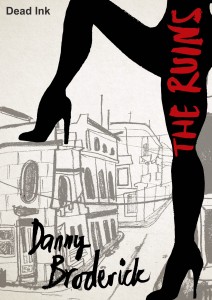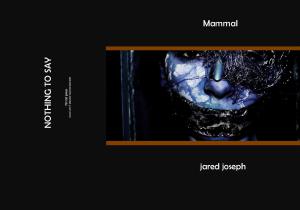-Reviewed by David Sheridan-
‘Only a moment ago she had been enjoying the twist of her spoon in the syrup jar and watching the golden slick drizzle onto her waffle.’
So opens Above the Parapet, a collection of short stories from Alison Lock. It’s a telling sentence, and perhaps more so than the author intends.
It took me a lot of effort to get into Above the Parapet. I started reading it, which was fun, because it’s a series of evocative, emotional vignettes about a variety of (mostly) interesting characters, told with painstaking, utterly engaging attention to detail. But then I kept right on reading it, which was a mistake. Don’t get angry yet – you’ll see what I mean.
In ‘Ashes for Roses’, a woman and her brother cultivate roses for a garden show with a spectacularly passive-aggressive unspoken rivalry, while in the background, the memory of Eyjafjallajökull’s ash-cloud rises ominously. When freak weather conditions aim the debris-cloud at that same garden show, an Act of God of such startling precision and non sequitur as to more properly belong to Left Behind, we are first introduced to the surreal character of these stories.
‘The Mission’ introduces an improbably virtuous young man named Gabriel, who’s about to be let fly into the sky beneath nine hundred helium balloons. The angel imagery isn’t subtle, but then it’s not meant to be: as he descends, wings sprout from his shoulders and he flies back to the town, invigorated and empowered. The story’s bizarrely parochial idea of virtue also offers some sharp comments on English life.
These two stories ground surreal elements in the real world. That’s cool. I can get behind that. The next, ‘The Inventions of Mr. Pitikus’, tells a surreal story in a (kinda) realistic rendering of a surreal world – and within a sentence or two, Lock has established that her collection, while anchored in reality, will roam far across the multidimensional possibility-spaces of the surreal.
But that’s not Lock’s strength. She never seems sure if the dystopian surrealism is a means to an end, or the end in itself. In ‘… Mr. Pitikus’ the world itself is surreal, providing a safely pseudo-mythological backdrop for a climate-change fable. In ‘Tweed’ and ‘The Drowning’, two evocative second-person experiences, exegetic surrealism is used to illustrate the mercurial nature of memory, and it works far too well (before Above the Parapet, I’d never seen this kind of hypnagogic experience done well, and was sceptical about the possibility; Lock’s attempt is valiant, but my scepticism remains).
The strongest pieces are the purely sensory, the experiential vignettes painted in exquisite detail. ‘The Hanging Tree’, probably my favourite piece in the book, tells the last story of a hangman who, having performed his last duty, takes a short walk through a broken world before making the leap from the gallows to join his victims. This is a syrup moment, and I find myself rereading it – not, as with ‘The Drowning’, in bafflement, but because each re-reading is another spoonful on my waffle. Watch it drip, watch it gleam.
This is a good time to talk about dystopia. Lock’s blurb calls her characters’ world ‘dystopian’, but I don’t see that. Very few of her characters are happy to be living in their world, and it’s clear that something awful has happened offscreen that’s left many of her protagonists struggling in various states of post-civilised subsistence. But those various states – some, like ‘Seraph’ and ‘Erthenta’, envision vast ecological catastrophe and the collapse of civilisation, while others, like ‘Bugs’, portray a changing climate that’s little more than a nuisance – occur at different times, or in different worlds, or something. The difference is great enough to leave the reader a little adrift. Dystopian and post-apocalyptic literature have been so codified that it’s possible to portray them with shared reference, using very little explicit storytelling. Lock mostly tries this, but the trouble with shared-reference backgrounds is that you can’t keep changing them from story to story, then put the stories in anachronic order and expect a reader to keep ploughing on through. It’s disconcerting, and maybe that’s alright – but worse, it’s disengaging. I find myself, a life-long Asimov fan, missing his warm fireside-chat introductions. They would do this collection a world of good.
Of course, shared-reference storytelling allows an author to evoke powerful memes with a whisper – and Lock does so, repeatedly, with themes of death and heaven. Her characters’ deaths, when they come, are not always clear. Some of them just drift off, and their friends and surroundings with them, up into the sky where it’s bright and peaceful. In ‘Eggshell’, the most coherent of the several stories to feature dreamlike scenarios, a dead village presents itself as it was. The church with the crooked steeple stands as tall as it once did, and the ancestors of its present inhabitants go about their lives as if nothing ever changed for them. It’s beautiful, and when the story snaps back to the mortal realm, I don’t want it to. The same post-mortal experience occurs again and again, and these moments are some of the strongest in the entire collection.
This is Lock’s real strength: the experiential quality of her vignettes leaves a mental after-image which takes time to fade. That’s why it’s difficult, even jarring, to jump from one apocalypse to another, but it’s not a fatal flaw for the book: it just necessitates a different reading strategy. If you’re reading this book, don’t go at it one-story-after-another. Leave a gap. Read one a day, though perhaps not right before bedtime. These stories deserve the time it takes to consider them: the time it takes to watch the syrup drizzle. Give them time to digest, and when you’re hungry for more, go back without preconceptions. When you do, you’ll like what you get.











